Lindsay Clandfield and Duncan Foord give a run-down of the ten most important tools in a teacher’s locker, plus five survival tools for mobile devices.
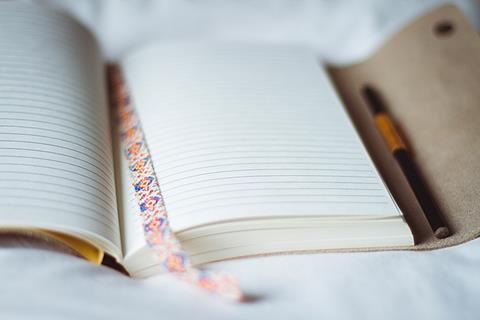
To download the article below, please click on the link to the right of the screen.
Stationery pack Photos Music Dice and counters Notebook Pocket-size bilingual dictionary Portable data storage device Diary Deck of cards Bag of sweets/mints The most important thing Top five survival tools on a mobile device
Not all of them are absolutely necessary but, as they say in America, “It’s better to have one and not need it than need one and not have it.”
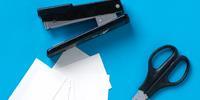
1. Stationery pack
Included in this pack are the basic tools of the trade that every teacher uses at some point: pens of different colours (at least one for writing, one for marking), scissors (teachers are often cutting things up), sellotape or a gluestick for putting together your own materials, paper clips or a small stapler and Blu-tack (for putting things up on the wall or bulletin board). Label your tools! It is second nature for English teachers to make off with someone else’s stapler or scissors.
2. Photos
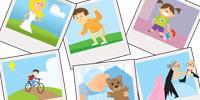
A collection of photos. Include photos of your family, your home, you at a younger age (or at a time when you looked quite different), a place you have visited, etc. The amount of language work that can be derived from a simple photo is considerable; if it is a personal photo (with a story behind it), it is considerably more. Personal material is very motivating for learners, who are naturally curious about their teacher as a person. Leading by example can encourage learners to bring in their photos. In the past, we would have advised bringing these in a physical album, and this is still possible. However, many teachers would probably now have photos on their phone, tablet or computer. If this is the case for you, make a special album for sharing with students.
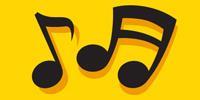
3. Music
Have different playlists for classroom use. One playlist contains classical music (Handel, Bach, Mozart can help relax and inspire learners); another playlist contains something more noisy and upbeat. These serve as background music to suit the activity type: from quiet writing or pairwork to a ’find someone who’, or an ’at a party’ type role-play. A final playlist contains some of your favourite songs (you’ll need the lyrics too, of course), which you can use with your learners.
4. Dice and counters
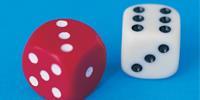
Lots of coursebooks and resource materials include language games that are played on a game board. These often require dice and counters, and they don’t come included with the books! Plus, dice can be used to randomly nominate students or randomly select questions to ask.

5. Notebook
Apart from using a notebook to jot down lesson plans, it is great for taking down students’ errors in communication activities. The type with tear-out pages is best, in case you want to give the page to your students. Use the notebook to write down feedback from your students and any requests. Use it to write your own reflections on some of your classes: a great way to help yourself develop as a teacher. The notebook format means you can look back if you want. We recommend A5 size. You can, of course, use a notebook function on a smartphone but this is harder to give to learners and, if done wrongly, can look like you are sending text messages during class!
6. Pocket-size bilingual dictionary

If you are new in a country and don’t speak the language, you will probably have one of these anyway. Seeing you grappling with their language can be a great source of inspiration and comedy to your students. The dictionary is not only useful for resolving communication problems in class but also for helping the teacher prepare. Why not look up the words you are going to teach learners and give them a translation exercise; or let them find the items themselves if they have their own? Dictionaries tend to have more than just words. There are useful phrases for different situations (shopping, in the restaurant, on the bus, etc.) and verb tables which can be exploited. Again, a dictionary app on a phone can serve the same purpose but be wary of looking like you are distracted by your phone (see 5).
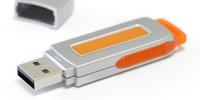
7. Portable data storage device
Many schools now have at least one computer somewhere on the premises. Your own personal data storage device is very useful to have. This is most likely to be a USB memory stick. You might prepare material for a class on an outside computer but want to print it at work. Or a colleague might have a great exercise on the school computer that you would like to adapt. Another thing to keep would be a ’My Favourites’ collection of websites for easy access at home or at work. Finally, many teachers carry the class audio of their coursebook on a memory stick and play it via the computer and speakers in class. This is much handier than fiddling around with CDs.
8. Diary
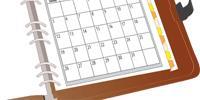
To make sure you are in the right place at the right time: classes, meetings at school, etc. Use it to block in periods of lesson preparation time, write to-do lists, set and mark work, exams, etc. Keep a record of dates with students for reporting back on out-of-class tasks such as watching films and reading books. Encourage your learners to use a diary too to register their ’appointments with English’ in and out of class. The diary makes it serious. If you are serious, there’s a good chance they will be.
A diary is a good teaching resource for days, months and numbers. Copy blank (or filled-in) pages for reading and speaking activities, tense practice (yesterday, tomorrow …), and so on. Some diaries contain additional information, such as time zones and maps, which can also be usefully exploited.
As with many of the other things on this list, the diary can be a digital one on your mobile device. We personally still like using paper diaries but that may be us showing our age!

9. Deck of cards
Apart from playing solitaire when your students turn up late, this very cheap and portable resource has many uses. Use the cards to organize group and pair work either for random groupings or teacher-chosen groupings, also for deciding who goes first in feedback slots (lowest card starts) and assigning roles in role-play and simulation activities. Cards ace to six will serve as a substitute if you lose your dice (see below).
There are many language practice activities that can be built around a pack of cards. Here are a few examples: you can teach your students card games that will help them learn the meta-language of games (you go first, it’s my turn, pick up a card, etc.) as well as the numbers, suits, etc. Cards can be used for communication-gap activities, where a student has to arrange the cards hidden from his partner and then describe the arrangement for his partner to replicate. Picture cards (King, Queen, Jack) can represent characters in stories … the list goes on.
10. Bag of sweets / mints

For those teachers with children’s classes, a bag of sweets is a good thing to have on hand to reward students. However, this practice doesn’t need to be restricted to younger learners! A breath mint is often a necessary bit of equipment for the teacher, especially for those one-to-one classes after a garlicky lunch!
The most important thing
All the teachers who were asked what things they would include in a survival pack unanimously agreed that an invaluable tool was the teacher’s HEAD. Your head contains all the imagination, ideas, experience and knowledge you bring to your classes. Effective use of this item is a must for the survival of any teacher!
Top five survival tools on a mobile device

We’ve mentioned how several items on our list above could be compatible with other tools such as smartphones, but as mobile devices (smartphones, tablets, etc.) are becoming more and more frequent we thought we’d add a special section on ’must-haves’ for such items.
1. Camera
Of course, this is good for taking the obligatory end-of-term group photo; but you can also use your camera to make a quick record of your boardwork or to create your own more local versions of photos to serve as a warmer for a unit topic.
2. Voice recorder
Use this for making your own version of a listening text in the coursebook (this way you can change names or references to make them more local) or for recording a student’s presentation or students’ pairwork - with their permission of course. Recording students’ oral work and listening to it afterwards in more detail gives you more time to assess their oral proficiency.
3. Ringtones and a timer
Most new devices, especially phones, will come with a variety of ringtones. Combine these with the timer to use for activities in class, e.g. ’When you hear the dog bark/explosion/alarm bell/police siren, then put your pens down.’
4. Sounds
Here we don’t mean more sound effects; we mean Sounds, the award-winning pronunciation app! Sounds is an interactive phonemic chart that’s great for practice and review of English pronunciation. Really good especially if you are training your students in recognizing the phonemic symbols. Find out more about it here.
Downloads
Click link to download and view these filesTeacher's survival kit: Article
PDF, Size 1.85 mb
Introduction to Survival Guide

We’re Lindsay Clandfield and Duncan Foord; two language teachers, teacher trainers and writers based in Spain. With more than forty years’ experience between us, we also consider ourselves survivors.
- 1
- 2
- 3
- 4
- 5
- 6
- 7
- 8
- 9
- 10
- 11
- 12
- 13
- 14
- 15
- 16
- 17
- 18
 Currently
reading
Currently
reading
Survival Guide: Teacher’s survival kit












No comments yet